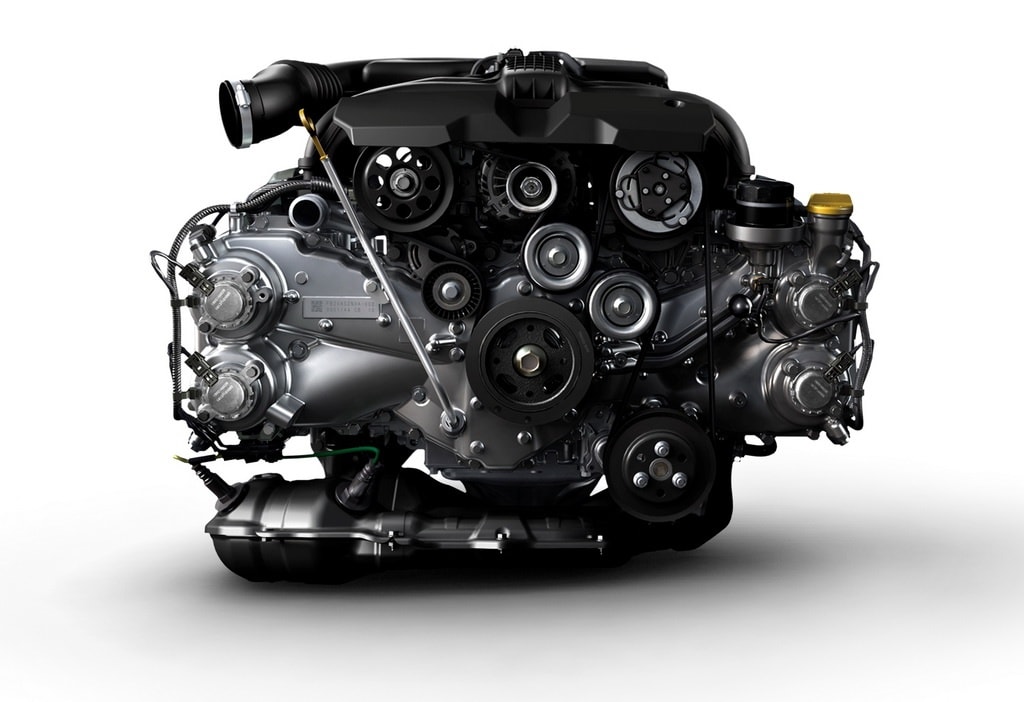Japanese automaker Subaru released today details of its new generation boxer engine, the first overall renewal of the powerplant in 21 years. The third generation unit, also known as a Horizontally-Opposed 4 cylinder gasoline unit, has been enhanced with Subaru’s latest engineering research and development.
“In this design, the pistons are arranged symmetrically left and right along the crankshaft. When the pistons move, they resemble the punches thrown by boxers, thus resulting in this popular name,” a company statement reads.
While being lightweight, compact, with a low center of gravity and superior vibration balance, the new boxer engine comes with an approximately 10% improvement in fuel efficiency and driving performance, Subaru says.
This engine is available with 2,500 cc or 2,000 cc displacement, both with 4 cylinders. These models will now be positioned as Subaru’s main engines. Fuji Heavy Industries Ltd. (FHI) has built a new factory at the Gunma Oizumi Plant exclusively for the production of this new-generation boxer engine.
New generation Subaru boxer engine characteristics are detailed below:
“In this design, the pistons are arranged symmetrically left and right along the crankshaft. When the pistons move, they resemble the punches thrown by boxers, thus resulting in this popular name,” a company statement reads.
While being lightweight, compact, with a low center of gravity and superior vibration balance, the new boxer engine comes with an approximately 10% improvement in fuel efficiency and driving performance, Subaru says.
This engine is available with 2,500 cc or 2,000 cc displacement, both with 4 cylinders. These models will now be positioned as Subaru’s main engines. Fuji Heavy Industries Ltd. (FHI) has built a new factory at the Gunma Oizumi Plant exclusively for the production of this new-generation boxer engine.
New generation Subaru boxer engine characteristics are detailed below:
- The bore and stroke, the basic structure of this engine, have been reviewed to achieve a compact combustion chamber as well as a long stroke, which was difficult previously due to chassis mounting conditions in boxer gasoline engines. This allows high combustion efficiency, and generates a sufficient mid-low speed torque with improved fuel efficiency and practicality.
- Improved fuel efficiency has been achieved through optimization of intake port configuration and the addition of partitions inside ports, the use of TGV (Tumble Generated Valve), and the use of an EGR (Exhaust Gas Recirculation) cooler.
- AVCS (Active Valve Control System) is used on both intake and exhaust valves. For the intake side in particular, an intermediate lock system allows valve timing to be advanced or delayed for precise control over intake and exhaust valve timing, allowing maximum engine performance in output, fuel efficiency, and exhaust emission.
- The use of lightweight primary moving parts, such as pistons and connecting rods, and a highly efficient and compact oil pump provides an approximately 30% reduction in friction loss and improves fuel efficiency and revolution response.
- Cooling has been optimized by using separate engine cooling circuitry for the block and the head, resulting in improvements in fuel efficiency and output characteristics.
